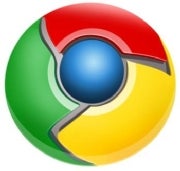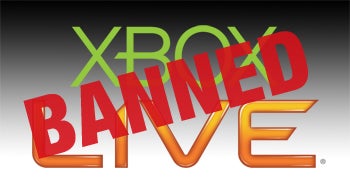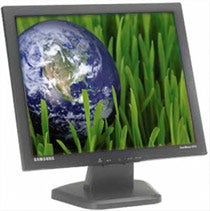The road to a faster PC starts by properly optimizing your hardware. While some of these procedures can be risky, they can also prove very effective, often delivering direct and noticeable performance gains in every area of your system.
1. Update the BIOS
Upgrading your PC's BIOS, or firmware in other devices like the router, could be a quick way to improve performance, fix bugs and even add new features. Look for the current BIOS version number on your boot screen or in the BIOS set-up program and then visit the manufacturer's site to check for recent upgrades.
2. Disable unwanted devices
Speed up the boot process by turning off motherboard devices that you're not using, such as integrated sound, graphics, extra network ports and so on. Look for a BIOS set-up menu called something like Integrated Peripherals to find the options that you need.
Once Windows starts, launch Device Manager (
devmgmt.msc), locate any remaining unwanted devices, right-click them and select 'Disable' to save more resources. Be careful, though – disable the wrong device and you're likely to find that your PC won't be able to reboot. If you're in any doubt about what a service does, look it up on the internet or leave it well alone.
3. Kick-start your PC
Optimizing your BIOS settings will make for a quicker boot. Turn off the extended memory test, since it's useless, then turn on a QuickBoot or FastBoot mode (the names may vary) for a little extra speed.
Next, browse your BIOS set-up program looking for the boot order settings (often found under a Boot or
Startup |
Boot menu), which is a list that determines where your system looks for bootable devices.
Make sure that your hard drive comes right at the top of the list to avoid your system wasting time checking other devices. If you need to boot from CD later on (typically to install a new operating system or run a Live CD), you can temporarily change it back.
4. Get rid of USB checks
If you leave a USB drive connected to your PC and it appears in the boot order before your hard drive, then your PC will give the drive some time to initialise before checking whether it's bootable. In some BIOSes this time is called the USB Mass Storage Delay, and it can be determined by you.
If you never boot from a USB drive then set this to the lowest available figure to minimise any delay. If you find that you need to boot from a USB device in the future, simply increase the figure again.
5. Overclock the CPU
Overclocking your CPU – or running it faster than its rated speed – can get you 10 to 20 per cent more performance for a few minutes' work. There are risks, though. More speed means more heat and maybe more voltage too.
You'll use more power, and components will have a greater chance of failing – so don't try this unless you're willing to accept the risks of doing so. Assuming you are, launch your BIOS set-up program and look for the overclocking settings (try the
Advanced menu). Exactly what's available depends on your hardware, but in principle increase your CPU and memory frequencies just a little.
Boot your system and stress-test it with tools such as
memtest86+ and
OCCT to confirm that all is well. If it is, increase the frequencies a little more, and see what happens; if not, reduce the frequencies or increase the voltages (VCore, memory voltage), which should allow you to run a little faster (although doing this also risks burning out your components).
Don't do anything until you know what's appropriate for your hardware, though.
The Extreme Overclocking forum is a great place to find out more.
6. Safely overclock the CPU
If you've got an Intel Core 2 Duo or Core i7 CPU, check your BIOS for a setting like 'Intel Dynamic Acceleration' or 'Turbo Mode', and ensure it's turned on. This handy setting will automatically overclock one core while shutting off the others, improving single-threaded performance.

If you're already overclocking, though, this setting stands a good chance of locking up your PC. Disable it and you may be able to push things just a little bit further.
7. Clean your laptop fan
Over time, the fans and vents on a laptop will become covered with dust, hairs and assorted gunk. The system then runs hotter, so your fan is on for longer and battery life falls. Worse still, your CPU speeds may be throttled to try and reduce the temperature. It's a very good idea to open the case and carefully clean away any dust to make sure that the airflow is unobstructed.
8. Speed up graphics
Overclocking your graphics card can give games a little extra zip. How you get to the right settings will vary, but on our test PC, you right-click the desktop, select
Nvidia Control Panel |
Adjust GPU settings and choose 'Custom clock frequencies' to find the 'Core bus and memory bus' figures.
Increase them just a little to give more speed. After that, it's much like overclocking your CPU: test that everything is OK, increase the clock rate again if it is, wind the settings back a little if your PC crashes and repeat until your system is stable. You can read more on
ATI and Nvidia tweaks at TweakGuides.
9. Safely speed up graphics
Some BIOSes offer very basic PCI Express graphics card overclocking with a setting called 'PEG link mode'. If you don't intend to try more intensive overclocking, set this to its highest setting (usually
Faster) and you should see a little extra speed.
10. Optimise the RAM
It takes time to access your RAM, but you can minimise this delay by playing around with the BIOS memory timings. There's normally a timing entry set to
By SPD, which means that your system uses the default timing values set by your RAM. Set this to
Disabled or
User defined and you can choose your own timings.
Look for
CAS Latency, say, reduce it by one setting, reboot and test that your system is working correctly. Repeat until your PC becomes unstable, then increase the value by one and move on to something else (check your BIOS documentation for more).
Crashes here could stop your PC booting at all, even into the BIOS, so make sure that you know how to reset your BIOS to its default settings before you start messing around with any values.
11. Edit the BIOS
If your Nvidia drivers are proving unhelpful, then there is another way to ramp up your graphics performance – edit the BIOS directly. Of course, this is also the quickest way to trash your card altogether. Don't try this unless you're willing to take the risk.
To do it, download a copy of
Nibitor and then run it. Click
Tools |
Read BIOS |
Select device, choose your graphics card and click 'OK', then click
Tools |
Read BIOS |
Read into Nibitor to start experimenting. Annoyed that you can't change the shader clock in the driver?
Just click the Clock rates tab and change it to whatever you like. Tweak the other settings, click
File |
Save and then use a tool like NVFlash to update your card. See
www.mvktech.net for more detailed instructions.
12. Stop network throttling
Windows Vista limits network transfers when you're playing multimedia files to stop your music or video skipping. Great idea, but it can reduce performance on some high-speed network connections.
To fix this, go to
HKEY_LOCAL_MACHINE\SOFTWARE\Microsoft\Windows NT\CurrentVersion\Multimedia\SystemProfile and create a new
DWORD value called
NetworkThrottlingIndexValue.
Set this to values between one and 70 (10 is the default, higher values mean less throttling) or
FFFFFFFF to disable throttling completely.
13. Turbocharge GMA
Many laptops use Intel's Graphics Media Accelerator (GMA) video chipset, which is too slow for most games or other graphics-intensive packages. Some low-voltage GMA chipsets are drastically underclocked, though, and are able to perform far better than the default settings suggest.
GMABooster takes advantage of this to increase your GMA clock rate by x2.4, without voltage changes or affecting system stability.
14. Disable acoustic mode
Some BIOSes contain a setting that makes your hard drive run more quietly. This sounds great, but unfortunately it negatively affects performance.

If you're more concerned with increasing your system's speed than reducing the amount of noise it makes, check your BIOS program for a setting like
HDD Acoustic mode (it's in the Performance section on Dell desktops, for example) and make sure that it's
set to 'Performance' rather than 'Quiet'.
15. Enlarge the cache
Windows Vista stores your hard drive writes in a cache. This helps it to write data more efficiently and improves performance. To run faster still, launch
devmgmt.msc, expand the Disk Drives section, right-click your drive, select
Properties |
Policies and check
Enable advanced performance.
Windows now uses a larger cache and writes from it less often, improving performance but also increasing the risk of data loss if the drive loses power.
16. Use ReadyBoost (or not)
Windows Vista can use high-speed USB flash drives to cache data and hopefully improve performance. To try it out, plug in a USB device and then confirm that you'd like to use it with ReadyBoost if you're asked. If you're not, go to Computer, right-click the device and select
Properties.
If the feature can be used, there will be a ReadyBoost tab; click this, select
Use this device, choose the space that you'd like to give to Windows and click
OK.
Alternatively, if you have no interest in using ReadyBoost, turn it off to save a few system resources. To do this, launch
services.msc, double-click ReadyBoost, click
Stop and set
Startup type to
Disabled.
17. Avoid Wi-Fi interference
Poor wireless network performance is sometimes down to interference, perhaps because your neighbours are also running a Wi-Fi network on the same channel. To find out if this is happening, run a network detector like
Inssider or
Vistumbler to see what's going on.
If you find that your neighbours already have wireless kit working on channel 11 (a common default) then switch your kit to channel six, say, to see a real performance boost.
18. Try CompactFlash cards
They're more expensive and less portable than USB flash drives, but CompactFlash cards can be much faster to use. If your system has an internal reader (so not one connected via USB) then give one a go; we tested the SanDisk Extreme IV CompactFlash card and found that it delivered speeds of over 40MBps, more than twice what you'll see with many USB drives. It also worked with ReadyBoost on our PC and delivered a noticeable improvement in performance.
19. Reformat your USB drive
If you must stick with USB drives instead of switching to CompactFlash cards, make sure that they're formatted using the best filesystem. NTFS delivers the worst performance, so avoid it like the plague.
FAT32 is better, but if you only need to use the drive on Vista systems then use exFAT for the best speeds.
To reformat your USB drive, right-click on it, select
Format and then choose either
FAT32 or
exFAT in the
File System list.
See TestFreaks for some benchmark figures.
20. Up the DRDY thingy
The BIOS DRDY (Device Ready) timing setting configures how quickly IDE or SATA devices will become available after they've completed their existing commands.
Changing this setting to its highest possible option (which is usually
Optimise) will improve system performance a little, but it could also result in a crash or even data loss. As always with potentially dangerous tweaks, experiment with it at your own risk.
21. Streamline PC startup
Your PC will boot more quickly if you give it less work to do during the start-up process. Remove discs from your DVD drives and Windows won't wait while they spin up. Unplug USB devices that you won't be using for a while, and your system won't load drivers unnecessarily.

Finally,
use Autoruns to display and strictly limit the number of programs that launch when Windows starts,
and Startup Delayer to postpone the launch of non-critical start-up programs for a minute or two, letting your PC focus on booting up instead of running apps.
22. Disable services
Save your system resources by disabling unnecessary services. If you have Windows Vista and don't use Media Center, for instance, then launch
services.msc, double-click the Windows Media Center Extender, Receiver and Scheduler services and set their
Startup Type to
Disabled.
Black Viper's website has more.
Vista users can also delay the launch of non-critical services, which can help your PC to start a little faster. To try this out, launch
services.msc, double-click something you won't need immediately and set its
Startup Type to
Automatic (delayed start). Now reboot to see if it makes a noticeable change.
23. Decrease waiting time
If your PC has two or more operating systems then you'll see a boot menu when it starts. To decrease the amount of time it waits before choosing the default setting, right-click Computer, select
Properties |
Advanced system settings |
Startup and recovery settings, choose your default OS and set the
Time to display list of operating systems to something like 10 seconds.
24. Log in automatically
If you're the only person who uses your PC, you can save time by logging in automatically. Be aware that this does introduce a security risk, however, as anyone with access to your system can do the same thing.
Launch the command
control userpasswords2, uncheck
Users must enter a user name and password, click
OK, enter the log-on user name and password if you're prompted and click
OK again to enable automatic login.
25. Browse the event viewer
Windows Vista analyses every boot and shutdown, then records any programs that are slowing you down. To have a look for yourself, launch
eventvwr.msc, expand
Applications and services logs |
Microsoft |
Windows |
Diagnostics – performance |
Operational, and click on the
Warning,
Error and
Critical events.
Sometimes Vista gets this wrong, but if the same name keeps coming up then remove, update or reinstall the app to speed up your PC.
26. Prioritise programs
If you're running lots of programs simultaneously but one is particularly important, you can make the CPU give it a high priority. To do so, press
[CTRL]+[Shift]+[Esc] to launch Task Manager, right-click the app and select
Go to process.
Then right-click the process, select
Set priority |
Above normal, and it may now get more CPU time. Alternatively, set a resource-hogging app to
Below normal priority and other programs should become faster. Don't tweak critical or system processes, though, or your PC may crash.
27. Recover Vista resources
If you don't use the sidebar then right-click it, select
Properties and clear
Start Sidebar to prevent it loading in future. If you've installed your own antivirus software then you don't need Windows Defender.
Launch Defender; click
Tools |
Options, scroll down to
Administrator options and deselect the
Use Windows Defender box. You can also either turn off Aero to save a big chunk of RAM, or optimise it by right-clicking Computer, selecting
Properties |
Advanced |
Performance settings and choosing
Adjust for best performance.
The indexing service is useful, helping you find files and folders at speed, and it only runs when your PC is idle. Still, some say turning it off makes a real performance difference. If you rarely use the search function then launch
services.msc, double-click Windows Search, click
Stop and set
Startup Type to
Disabled to turn it off.
28. Replace Windows search
If you have turned Windows searching off, replace
it with the utility Everything. This runs far more quickly, and it builds its database from the NTFS Master File Table, so no disk crawling is required.
It only works with NTFS though, and can't search the contents of files. If your search problems are with Outlook, take a look
at Xobni, which the authors say is up to 50 times faster than the default Windows keyword search.
29. Copy more quickly
If Windows takes forever to copy files, use
TeraCopyor
FastCopy instead. These apps deliver better performance and handy extras like the ability to pause the copy process.

Use
Fling to schedule network or FTP transfers to take place when you're not around.
30. Use speedy DNS servers
When you enter a domain name into your browser, is has to be resolved into an IP address by your ISP's DNS server. If this is overloaded then there will always be a browsing delay. Fortunately, OpenDNS has fast alternative DNS servers that you can use for free.
To try OpenDNS, launch
NCPA.CPL, right-click your internet connection and select
Properties. Click
Internet Protocol (TCP/IP) and hit
Properties (use
v4 on Vista), then choose
Use the following DNS server addresses and enter
208.67.222.222 in the
Preferred and
208.67.220.220 in the
Alternate boxes.
31. Put your PC to sleep
If you have Vista, choose
Sleep rather than
Shutdown to save some time the next time you want to use your machine. Windows saves the state of your PC rather than closing it, which means it turns off (and reboots later) far more quickly. Or at least that's the plan.
If Sleep won't work for you then it's probably a driver problem. Check the Event Log to see what's going wrong.
32. Reduce task switching
Regular editions of Windows switch rapidly from one program to another, ensuring a responsive user interface. But each task switch is an overhead, wasting CPU time. If you don't need a highly responsive interface – you're using Microsoft Office rather than playing 3D games, say – then giving each app more CPU time before moving to the next will cut task switching, making your PC more efficient.
Right-click Computer, select
Properties |
Advanced system settings |
Performance settings |
Advanced and select
Adjust for best performance of the background services. Restore the normal setting if apps seem less responsive.
33. Clean up your disk
Removing junk from your drive can improve performance, even if it still has hundreds of gigabytes of free space. Uninstall unwanted programs with Windows or
Revo Uninstaller. Likewise, stubborn security programs can be expunged using
AppRemover.

Next, try Windows Disk Cleanup or
CCleaner to remove redundant files. Manually browse the
Program Files and
Windows\Temp folders for unnecessary files and folders (only delete what you're sure is safe to go.)
Finally, click
Start (then
Run if you're using XP or earlier), type
%TEMP% and hit
[Enter] to inspect and clear your User Temporary Files folder.
34. Move your paging file
Relocate the Windows paging file to a second physical drive (not a partition) different to the one that your applications are on to enable your PC to read and write to both simultaneously. This will speed things up noticeably.
To do this, right-click Computer, select
Properties and click
Advanced [System Settings] |
Performance settings |
Advanced |
Change. Clear
Automatically manage paging file,click your current drive, select
No paging file and then
Set.
Next, select the drive you want to use for the paging file, select
System managed size, click
Set, then
OK and reboot to see the results.
35. Accelerate explorer
By default Windows XP regularly scans for new network printers and folders, adding anything it finds to My Network Places or the Printers folder. But if you rarely access network resources then this just slows you down.
Click
Start |
Control Panel |
Appearances and themes |
Folder options |
View, and clear
Automatically search for network folders and printers to stop it doing so.
36. Remove fonts
Most PCs accumulate fonts over time, reducing performance as your system spends time processing them. It's a good idea to remove fonts you never use, as long as you're careful – deleting important fonts can have all kinds of strange effects.
Opt for the odd script, foreign or symbol fonts first. If in doubt leave it alone, and copy all your fonts to a back-up folder first so that they're easily reinstalled.
37. Defrag thoroughly
The regular Windows defrag tool can't defragment files that are open for exclusive access, which means that your paging and Registry files remain untouched. Fortunately there's a free tool that can help.
PageDefrag runs during the boot process and can defragment these system files without any trouble.
It's also worth
trying a commercial app. PerfectDisk delivers the best results in our experience – get the 30-day trial and see how it works for you.
38. Go for speed over power
Windows Vista's power options can turn off many optimisations in its effort to save energy, so if you prefer speed then it's important to confirm you're set up correctly.
Click
Control Panel |
System and maintenance |
Power options and make sure you're using the High Performance plan. Next, click the
Change plan settings link under
High performance to make sure that you're using the fastest option for each setting.
39. Speed up the Start Menu
Make Windows open menus more quickly with a quick Registry change. Just go to
HKEY_CURRENT_USER\Control Panel\Desktop, double-click
MenuShowDelay and change it from the default 400 (milliseconds) to something smaller: 100ms works for us. Restart Windows to see the results.
40. Tune NTFS
If you don't use old 16-bit software, launch
REGEDIT and browse to
HKEY_LOCAL_MACHINE\SYSTEM\CurrentControlSet\Control\FileSystem, then set
NtfsDisable8 dot3NameCreation to
1.
Windows will no longer create DOS-style shortened versions of file names, speeding up file creation. Set
NtfsDisableLastAccessUpdate to
1 and Windows won't update the Last Access date on a folder when you view it, delivering a small boost to drive performance. These options can break older software, so test your PC thoroughly afterwards.
41. Optimise Firefox
Firefox stores its data in self-contained SQLite databases, and these can be compacted in order to recover a little performance. You could do this by downloading
the command-line tool Sqlite3 and then using the command
for %i in (*.sqlite) do @echo VACUUM; | sqlite3 %i to compact all SQLite files in the current folder.
However,
it's much easier to install the SQLite Manager Firefox add-on. After you've done this, navigate to
Tools |
SQLite Manager |
Database |
Connect database and browse to one of the large
.sqlite files in your Mozilla profile.
Note its current size, click
Database |
Compact database, and check the size again – our
urlclassifier3.sqlite database dropped by 40MB.
42. Speed up iTunes
Help iTunes run a little faster by disabling features that you don't use. If you don't ever look at the Genius recommendations, click
Store |
Turn off Genius to give a small performance boost.

If you're not on a large network or don't want to share your library, click Edit |
Preferences |
Sharing and turn off
Look for shared libraries and
Share my library.
If you don't use Apple TV, click the Apple TV tab and clear
Look for Apple TVs. Finally, click the Devices tab and clear any unnecessary
Look for... options.
Large libraries are the main reason for poor iTunes performance. Click
Music in the Library section, then hold down
[Shift] and choose
File | Show exact duplicates to look for multiple copies of songs. Delete any you don't need and then browse the library to remove other songs you don't play any more.
43. Install only what you need
If you normally select the
Complete option when you install a program, you might end up with all kinds of features that you never use. Get in the habit of selecting the
Custom option instead, and pick only what you need.
44. Upgrade your software
UpdateStar will scan your programs and report any it recognises that have updates available. Installing these should get you bug fixes, more features and better performance. Similarly,
DriverMax will identify outdated drivers, then download and install updates.
45. Fix Internet Explorer 8
If IE8 seems very slow and unreliable then your upgrade from IE7 may have broken some DLL registrations. To fix this, open a command window (if you're running Vista, right-click
cmd.exe and select
Run as Administrator) and type
regsvr32.exe actxprxy.dll. Press
[Enter], then reboot your PC to see if the browser has got any faster.
46. Block Flash applets
Flash applets use up system resources and can slow down your browser. Often these applets take the form of unwanted adverts, so it's a good idea all round to block them and recover the resources to give improved performance.
Firefox users need only install
FlashBlock to kill unwanted Flash apps, and if you install
Adblock Plus as well, annoying ads and banners will become a thing of the past. Meanwhile IE8 can now selectively block Flash applets, too.
Click
Tools |
Manage add-ons, select
Toolbars and extensions and opt to show all add-ons. Double-click the Flash add-on and click
Remove all sites |
Close. All Flash applets will now be blocked.
However, if an applet is trying to run on a site you trust, click the warning bar, select
Run add-on, add it to your allow list and Flash will be launched automatically on your next visit.
47. Tweak Microsoft Word
Simplify and speed up document displays by using a single typeface instead of many. To set this up, go to Word options, select
Advanced, scroll to Show document control and select
Use draft font....
If you're happy with your spelling, or at least content to check it when the document is done, turn off Word's AutoCorrect options (in the Proofing section of Options) to save some resources.
If you have a fast printer then Word's default background printing can slow you down (Clear
Print in background in the Print section of Options). A corrupted or bulky
normal.dotm template may also negatively affect speeds.
To sort this out, lose Word, locate the
normal.dotm file in your profile and rename it
normal.dotm.old. You'll lose your custom settings, but it may help to speed up the application. If you find that this doesn't help, restore the previous
normal.dotm to get your settings back.
48. Stop sharing
Windows Media Player's media sharing functionality can be a real resource hog. To turn it off, right- click the Library tab, click on
Media sharing and clear the
Find media and
Share my media options.
Next, launch
services.msc, double-click Windows Media Player, click
Stop and set its
Startup Type to
Disabled to save yourself some CPU time.
49. Clean your outlook inbox
The more messages Outlook stores, the slower it gets, so if you want to improve performance then some pruning is in order.
Most email responses contain copies of the original message, so you should be able to delete earlier messages without losing information.
Thread Compressor is a free Outlook add-in that will do this automatically.
Save All Attachments will save all the attachments in multiple emails, and then remove them.
50. Disable add-ons
Removing unwanted add-ons frees up system resources and can make your apps more stable.
In Microsoft Word 2007, click the Word button, then click
Word Options |
Add-ins. Choose the type of add-on you'd like to view in the Manage list, click
View and remove anything unnecessary. Repeat the process in Outlook 2007 by clicking
Tools |
Trust Center |
Add-ins.
In Adobe Reader, click
Help, select
About Adobe plug-ins and note the filename of anything you don't need. If you never want to save PDFs to RTF, say, then include
SaveAsRTF.API.
Close Reader, go to the plug-ins folder – probably
Program Files\Adobe\Reader 8.0\Reader\plug_ins – and rename the unwanted plug-ins, for example changing
SaveAsRTF.API to
SaveAsRTF.API.OLD.
http://pchackvideos.blogspot.com/2009/07/how-to-boost-wi-fi-range-with-homemade.html#links














